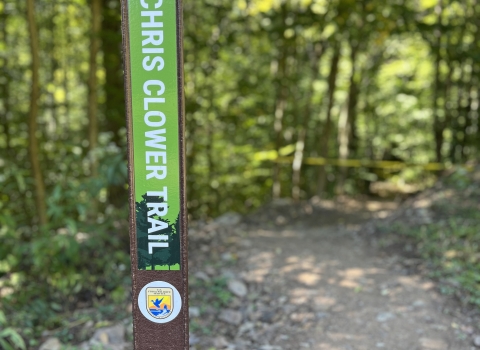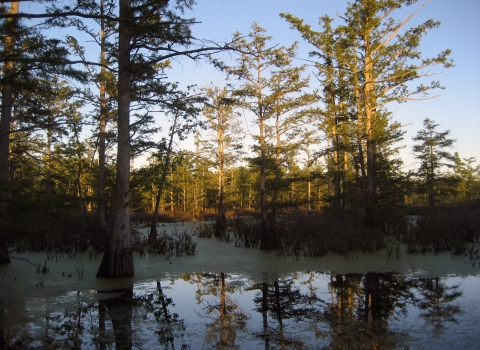What action is the U.S. Fish and Wildlife Service taking?
Based on a review of the best available science, the Service is finalizing its rule to protect the Canoe Creek clubshell as endangered under the Endangered Species Act (ESA). The ESA defines endangered as a species that is likely to become extinct in the foreseeable future throughout all or a significant portion of its range. We are also finalizing critical habitat for the species.
What are the primary threats to the Canoe Creek clubshell?
Sedimentation, poor water quality, and events like droughts and floods that have been exacerbated by climate change climate change
Climate change includes both global warming driven by human-induced emissions of greenhouse gases and the resulting large-scale shifts in weather patterns. Though there have been previous periods of climatic change, since the mid-20th century humans have had an unprecedented impact on Earth's climate system and caused change on a global scale.
Learn more about climate change have devastated Canoe Creek clubshell populations. Also, clubshell populations in both the eastern and western ranges are comprised of a critically low number of older individuals with no recently documented recruitment. The severity and frequency of drought events in the past two decades, combined with other ongoing habitat-related stressors and the mussel’s inability to naturally reproduce and recruit new individuals to the breeding population have likely caused the decline of the species.
What is the Canoe Creek clubshell and where does it occur?
The Canoe Creek clubshell is a narrow-ranging freshwater mussel endemic to the Big Canoe Creek watershed in northeastern Alabama. The species’ current distribution is similar to its historical distribution, which has always been very small. Its current distribution is split into two areas of Big Canoe Creek – an eastern and western range. These ranges are separated by an uninhabited stretch of river that include a part of the Neely Henry Reservoir, which likely prevents the dispersal of the species’ host fish (the clubshell’s primary mode of dispersal). As a result, the Service believes there is no genetic exchange occurring between the western and eastern portions of the species’ range, and therefore characterize these two areas as subpopulations.
What is the final critical habitat designation for the Canoe Creek clubshell?
The Service is designating 36.3 miles of river across two units (subpopulations) as critical habitat for the Canoe Creek clubshell. Unit One, the eastern portion, includes Little Canoe Creek (East) (which serves as a county line between Etowah and St. Clair counties, Alabama), and Unit Two, the western portion, includes Big Canoe Creek/Little Canoe Creek (West) in St. Clair County, Alabama. Both units are occupied by the species.
What is critical habitat?
The Service is required by the ESA to identify critical habitat when it proposes listing a species endangered or threatened. The ESA defines critical habitat as the specific geographic areas that contain features essential to the conservation of an endangered or threatened species that may require special management and protection. Critical habitat may also include areas that are not currently occupied by the species but will be needed for its recovery.
What protection does a critical habitat designation provide?
When an area is designated as critical habitat for a listed species, federal agencies are required to ensure that any action they fund, authorize, or carry out is not likely to result in the destruction of the habitat. This is carried out through consultation with the Service under section 7 of the ESA. This only affects projects that require a federal permit or other actions funded or conducted by a federal agency.
The critical habitat designation will have no impact on private landowners taking actions on their land that do not require federal funding or permits.
The designation of critical habitat does not affect land ownership or establish a refuge, wilderness, reserve, preserve, or other conservation area conservation area
A conservation area or wildlife management area is a type of national wildlife refuge that consists primarily or entirely of conservation easements on private lands. These conservation easements support private landowner efforts to protect important habitat for fish and wildlife. There are 15 conservation areas and nine wildlife management areas in the National Wildlife Refuge System.
Learn more about conservation area . A critical habitat designation also does not allow the government or public to access private lands, nor does it require implementation of restoration, recovery, or enhancement measures by non-federal landowners.


